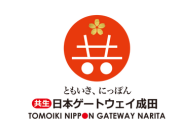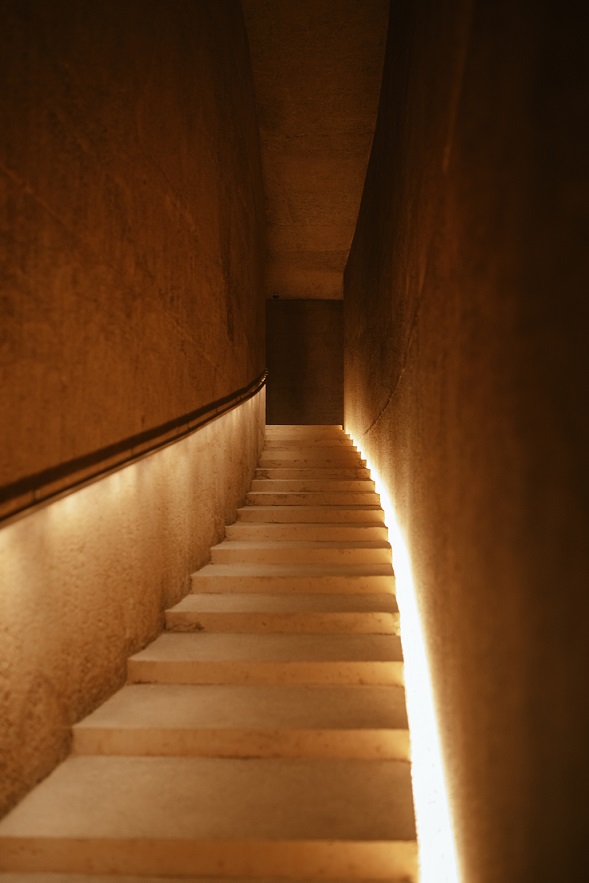

The official line is the steps of the €40m winery, opened last year, are irregular to prevent “automatic steps, compelling you to engage in thoughtful contemplation as you walk”.
It’s one of the best wineries I’ve visited this year (and I’ve visited a lot). It has everything: medieval castle, Michelin-starred restaurant, five-star hotel with wine spa and golf course, a museum and art gallery in a former convent, futuristic winery with top eco-friendly credentials, and 150ha of stunning vineyards that are on course for organic certification in 2025…
But what I found most impressive was the attention to detail. Everywhere you look, from the cellar steps to the beautiful rainwater collection system near the herb garden and the patterns of natural light in the winery’s walkways, the attention to detail is awe-inspiring. Almost obsessive.

Every detail of every aspect of the wine business appears to have been thought through to the nth degree. Like the irregular steps, they are there for a good reason. And, invariably, it’s the most eco-friendly option. The new flagship winery of the small Empordà wine region is setting itself up to be the benchmark winery for sustainability in Europe. It’s the first winery on the continent to receive LEED Gold certification for the high standards of eco-efficiency in construction, operation and maintenance. But, again, they carry it through every step of the visitor experience: from picking me up in an electric car to handing me a reusable, recyclable spittoon cup made from rice husks for the tasting.
“The Perelada winery represents a legacy for future generations,” according to Javier Suqué Mateu, president of Grup Peralada. “It’s one of the most fascinating European wine projects of the last decade and embodies our company’s foundational ambition to create great wines, as well as our conviction to evolve by means of experimentation and innovation.”

Here are the little things that impressed me most – practices that should be considered by all wineries aspiring to be sustainable.
Use of electric vehicles
An electric car picked me up from the railway station in nearby Figueres, about 26km from the border with France. From the road, you can’t see the two-level winery, as it’s semi-submerged in the landscape – a demonstration of the owners’ respect for the land where their ancestors invested in a castle 100 years ago.What you can see from the road are some of the 150ha of vineyards, which are in conversion to organic, and the historic La Granja farm buildings, designed in 1941 by the renowned Catalan architect Adolf Florensa. These now house the wine shop, tasting rooms, restaurant (Celler 1923 Wine Bar), and entrance to the underground winery.
In the car park there are four parking spaces for low-emission vehicles, two electric vehicle charging points, and 18 spaces for bicycles.
Inside the winery, there is a 10-metre difference between the grape reception area (below) and the lower winemaking, ageing and refining floor, so pumping is kept to a minimum. The forklifts are powered by lithium batteries.

Plant an herb garden

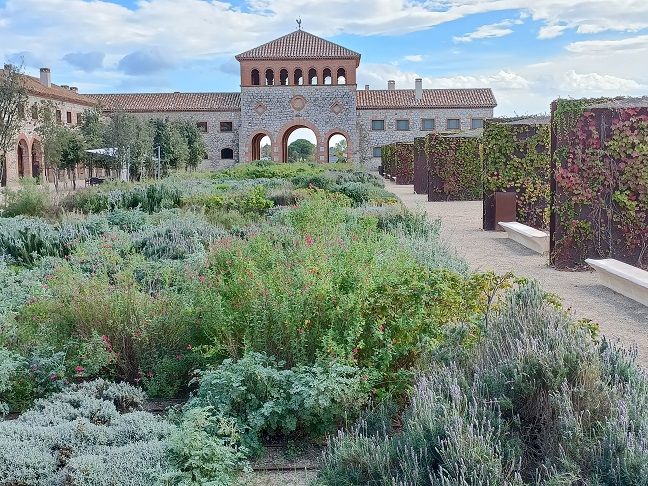
A kitchen assistant was in the herb garden, collecting from a beautiful patch of land growing rosemary, savory, thyme, marjoram and fennel. I was on my way to the winery, pausing to take in the aromas. But I would see some of these herbs later… on my plate in the Celler 1923 Wine Bar.
Generally, the outdoor spaces have been landscaped with vegetation native to the Mediterranean region, so they are suited to the local climate and soil conditions.
Be energy efficient

Near the grape reception area is a plot of solar panels which supplement the geothermal energy from the winery’s deep foundations. With 538 piles installed at a depth of between 8 and 20m, the building has 331 piles that are used to exchange heat with the ground to reduce heating, cooling and hot water consumption for an energy saving of around 37%.
Any additional electricity comes from certified renewable energy sources.

The winery, designed by RCR Arquitectes, makes the most of the natural light streaming in from the roof. As well as the beautiful patterns in the walkways, it creates a mystical ambiance in the Templo (above), the most serene part of the winery. This area is equipped with concrete fermentation tanks, oak foudres (below), and single rows of 300L barrels.

This is where Perelada’s top wines are created – as well as the experimental Ex Ex (Exceptional Experiences) line. Every year, the winemaking team produce small quantities of a large variety of wines, aiming to study the influence of factors such as the maturity of the grapes at the time of harvesting, the soil type, irrigation, or sun exposure. The very best of these experimental micro-vinifications become part of the Ex Ex collection.
Reusing the CO2 captured during the fermentation process

The Perelada winery, which has 188 tanks for plot-by-plot vinifications, uses the innovative Intranox Oresteo system for pump-free remontage. The CO2 released during fermentation is compressed and then introduced at the bottom of another tank to agitate those grapes.
Conserve wildlife
The once-scarce stork population is increasing in the Girona region thanks to Perelada. Since 1995, the winery has partnered with the Aiguamolls de l’Empordà Natural Park to reintroduce storks in the gardens of the magnificent Castell Perelada. Thirty pairs now nest in the gardens, raising more than 50 chicks each year.

Storks are also symbolically important to the Mateu family, which settled in Perelada Castle, in the village of Peralada, 100 years ago. Their wealth came from the Hispano-Suiza metal company which made airplane engines and cars. The emblem on the car bonnet was a sculpture of a silver stork in full flight (above).
As soon as the Mateu family took over the medieval castle complex, they also started revitalising the long winegrowing tradition of the Empordà, making wines in the cellars beneath the Convent del Carme. Now these cellars house a museum, showcasing the history of winemaking and wine drinking in the area, the heritage of Hispano-Suiza and the story of how storks became the symbol of the company.
The emblem was inspired by La Escuadrilla de las Cigüeñas, a World War I French flying squadron powered by Hispano-Suiza engines that adopted the stork as a symbol in memory of Alsace, the land of storks that had been occupied by the German army.
Authentic dining experience
Today, Perelada is a tourism destination. As well as the Castell Perelada and the 14th-century Gothic church and cloister of the Convent del Carme, the site offers an art collection, wine, glass, and ceramics museums, a casino, and restaurants endorsed by acclaimed chefs Paco Pérez and Javier Martínez. Through the castle’s garden and across a bridge is the winery, wine shop and the Celler 1923 Wine Bar.Elsewhere in the village, the group owns a five-star hotel, wine spa and golf course.
Javier Suqué Mateu, a member of the family’s fourth generation who took over the business in the 1990s, says: “The winery is not only a unique destination from the perspective of wine and excellence in wine tourism, but it also exponentially enhances the appeal of an exceptional approach that combines fine dining, historical heritage, nature, landscape, sports, leisure, art, and culture. It’s a perfect equation that is the secret to Peralada’s success.”
There are four places to eat: the Castell Peralada restaurant (with one Michelin star), the Shiro by Paco Pérez in the castle grounds, the L'Olivera restaurant in the hotel, and the Celler 1923 Wine Bar near the winery.
That’s where I stop for lunch. It’s all very relaxed and casual. The dishes, developed in collaboration with the Michelin-starred chef Paco Pérez, are inspired by the Ampurdanese cuisine of 1923, the year the winery was founded.
The kitchen is in full view of visitors, so you can see the chefs preparing the traditional dishes, such as bowls of garden salads, local cured meats and cheeses, and dishes referred to as “all-time favorites”, as you walk to the long table in the centre of the restaurant (in that era, families gathered around the same table).
The detail that surprises me here is the scraping sound of the 1920s-inspired plates and bowls – handmade in the town of La Bisbal and adding an extra layer of charm to the dining experience. People 100 years ago used to scrape their plates clean, I’m told.
Rainwater collection and water saving

Finca Garbet, an impressive vineyard overlooking the Mediterranean Sea, stands as a benchmark in water regeneration and efficient irrigation. In 1997, the business made a significant investment to reclaim water from the Colera municipal treatment plant, effectively using it for irrigation and covering 100% of its water needs with reclaimed water.
Perelada has also implemented “optimized” drip-irrigation at this flagship vineyard, with soil moisture sensors at various depths underground and a dendrometer to measure the expansion and contraction of plants to determine their specific water needs.
At one of the other top vineyards, Finca Malaveina (home to Perelada’s first estate wine, Malaveïna), and the recently established vineyard in front of the winery, Perelada has implemented an underground drip-irrigation system, which is even more efficient as no water is lost to evaporation.
Another high-tech feature of the water management system is satellite weather forecasting. Since 2015, each of the group’s five vineyards has had specific satellite-based weather forecasting. This detailed information allows them to plan irrigation a week in advance. The system also takes in parameters such as rainfall, humidity, temperature and wind, and alerts them to the risk of diseases and pests.
Rainwater for the gardens is stored near the winery in a 700m3 tank. Part of the rainwater storage also provides a decorative water feature between the herb garden and roof of the winery.
Following through to the tasting

They get the little details right in the tasting room, too. The red wines are served at 16°C – the same temperature as they have been aged and stored in the winery. (The white and rosé wines are served at 10°C). The spittoon cups (above) are made from rice husks (a byproduct of rice milling), so they are 100% biodegradable, reusable and recyclable.
But how are the wines?

The new winery was built to take Perelada’s wines from “excellent” to “extraordinary”. Oenologist Delfí Sanahuja (above) explains: “Over 20 years ago, we embarked on the adventure of building a winery that would reflect our passion for crafting exceptional wines and our commitment to experimentation. For us, the primary goal was to provide this land with a winery that encompasses all the conditions to create wines that transcend from excellence to exceptionality. In Perelada, we were already producing excellent wines, but the new winery is designed to craft extraordinary wines, each with its own personality and the ability to go beyond, to evoke emotions. Today, I can proudly say that our winery meets all the requirements for crafting exceptional wines.”
Indeed, the wines are as impressive as the winery. 5 Finques blends Merlot, Syrah, Samsó, Grenache and Monastrell from five distinct terroirs; the complex Només Garnatxa Negra shows the potential of Grenache in the Empordà; Centenari is a limited-edition Grenache-Syrah blend, featuring the finest grapes from Perelada’s most iconic vineyard, Finca Garbet, aged for 12 months in French oak barrels; and Finca Malaveïna, which had its first vintage in 1999, is a blend of Merlot, Cabernet Sauvignon, Cabernet Franc, and Grenache
This was one of my favourite wines so I asked Delfí about the blend and the vessels used for its maturation. He told me: “The marriage of Merlot and Cabernet imparts pronounced tannins and impressive ageing potential. Syrah, on the other hand, introduces density, smoothness, and a voluminous texture on the palate, while Grenache adds delightful fruitiness and luscious smoothness. The resulting blend is a wine that is complex aromatically, with notes that evoke spices, fruits, and flowers.
“Finca Malaveïna also undergoes a precise ageing process, with a curated blend of 74% of the wine aged for 12 months in new Bordeaux barrels, 10% in foudres, 9% in cement vats, and 7% in 300L French oak barrels. This ageing process imparts an additional layer of complexity to the wine, elevating its aromatic profile and refining its taste.”
It’s very precise. Every detail, every percent is there for a very good reason: producing an elegant and complex wine which, like the whole Perelada complex, is meticulously crafted.

 English
English French
French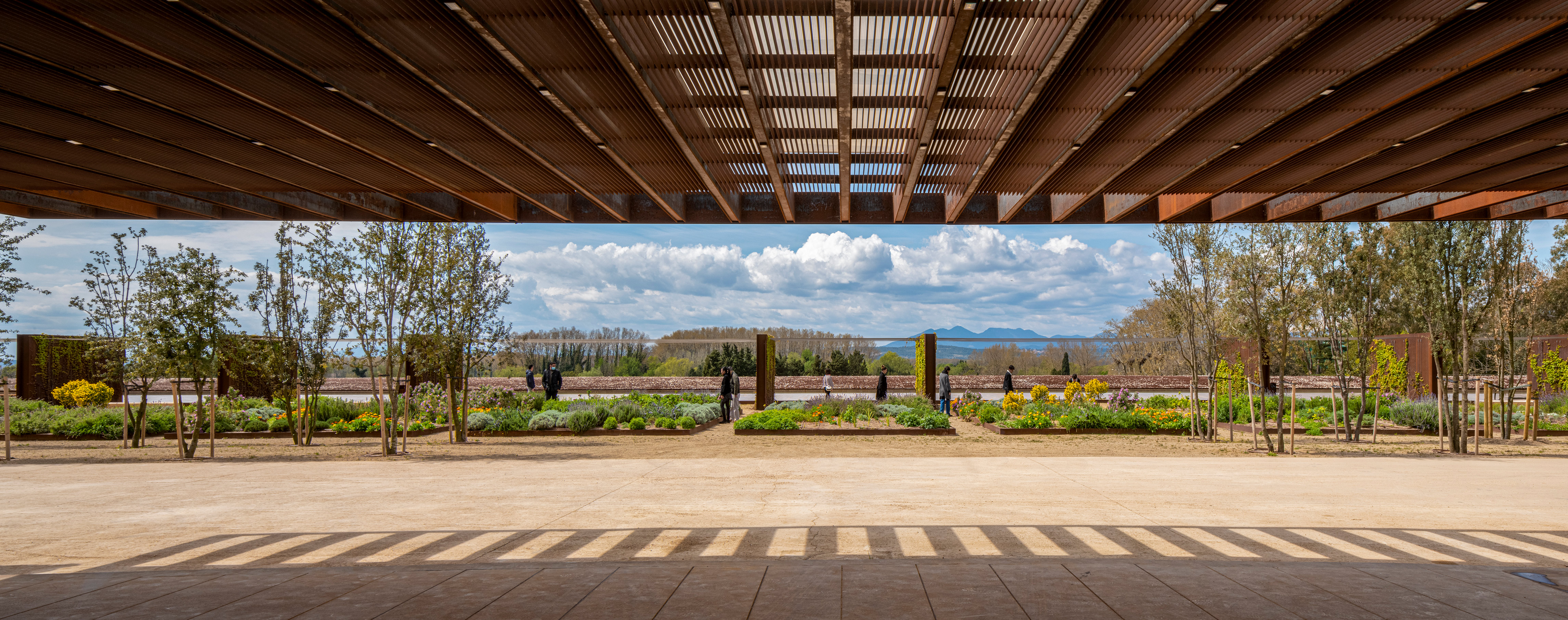

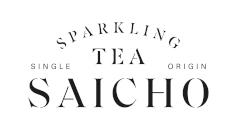

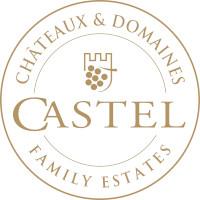


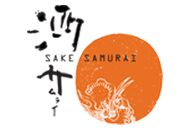
.png)
